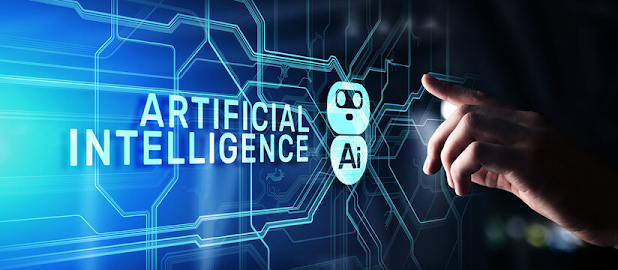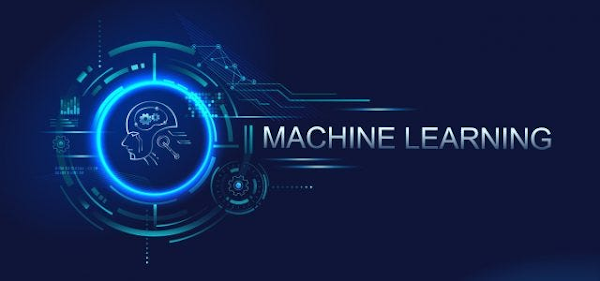
Although the concept of artificial intelligence has always found its place in science fiction products, it has gained popularity in the last 10 years more than ever before. With this popularization, the concept of "Machine Learning", which was less known before, began to be heard widely among the people, and the concept of "Deep Learning", which we had never heard before, entered daily conversations. But do you know what all these terms mean? Or the differences between them? In this article, we will try to clear your doubts about basic artificial intelligence concepts.
What is Artificial Intelligence?
Artificial intelligence, in its simplest definition , is the general name of systems that try to imitate a certain part of human intelligence . From this point of view, when it comes to artificial intelligence, systems that can completely imitate human intelligence or that have this purpose should not come to mind.
Artificial intelligence can show itself in various areas: Systems that predict what we write in our daily life, the search engine allows us to search for an image on Google, You tube's video recommendation system, and Instagram, which is very curious about how it once worked, is frequently ranked by those who see the story. are the examples we encountered. But artificial intelligence applications do not have to be so complex and high-level: Algorithms that sort a random number sequence from smallest to largest, find the shortest path from point A to point B, and solve sudoku are essentially artificial intelligence. The important point here is that it can solve problems that we do not expect beings to solve, whose automation method is not obvious, and which is not intelligent.
Today, the term artificial intelligence doesn't mean much on its own in academia; because many of the problems that are being dealt with already involve artificial intelligence. This popularization, which we are talking about and you are aware of, gives fruit to literally hundreds of academic publications every day ( you can follow some of the articles published on this subject here and here ), using the concept of machine learning , which is a more specialized concept that includes a large part of this research. Instead of using the concept of artificial intelligence, although it is not a wrong use, it causes confusion and many different sub-branches included in the field of artificial intelligence are now considered artificial intelligence. causes it to be misunderstood .Let's take a closer look at machine learning, a sub-branch of artificial intelligence found in most exciting artificial intelligence applications you've encountered in the last 10 years.
What is Machine Learning?
Machine learning, unlike other artificial intelligence applications, is a set of algorithms that do not need rules that we can interpret and enter manually, while imitating human intelligence on the one hand. Just as a person learns concepts by himself/herself with what he/she sees and hears and does not need someone to process these rules into his/her brain, machine learning applications similarly learn the desired task by assimilating the datasets presented to him/her.
We can explain the difference between artificial intelligence algorithms that do not include machine learning, which we can call "classical" or "traditional" algorithms, and machine learning algorithms with the following simple example: Imagine a human baby who has no knowledge of animals . This baby will not be able to distinguish between cats and dogs. In this thought experiment, let's imagine the baby as an artificial intelligence algorithm and the person who will teach him the differences as a computer scientist.
In classical artificial intelligence applications , instead of teaching the baby the difference between cat and dog, we give him a full set of instructions that will enable him to distinguish between cat and dog. These instructions should be prepared in such a way that this ignorant baby should be able to both follow those instructions and distinguish between cat and dog mostly correctly. It is obvious how difficult this is for both the baby and the teacher.
On the other hand, as you may have noticed, we don't really need to do this to increase baby's success: If we give the baby lots of pictures of cats and dogs and repeatedly tell which is which, the baby will at some point begin to distinguish the two with high accuracy. This is how machine learning algorithms work, as it turns out. Of course, computers unfortunately do not come with a learning algorithm in them when they are built. Computer scientists themselves design and adapt the most suitable machine learning algorithm for each problem.
Machine learning is essentially built around this logic. Many artificial intelligence applications that we have seen recently are actually machine learning applications. Machine learning is indispensable in real life for most artificial intelligence applications that we are used to seeing in science fiction movies; Therefore, the concepts of "machine learning" and "artificial intelligence" are getting more confused.
At this point, although we have largely avoided the conceptual confusion by revealing the difference between the concepts of machine learning and artificial intelligence, there is one more step we need to take: Although machine learning is a narrower concept than artificial intelligence, it still includes many different algorithms and It is a method field. That's why the concept of "machine learning" still doesn't adequately describe the products of popularization we're talking about. Therefore, now, by talking about deep learning, which is a sub-branch of machine learning, we will both avoid popular broadcast-level conceptual confusion and better understand why artificial intelligence has been so popular for the last 10 years.
What is Deep Learning?
To put it simply, deep learning is the name we give to training multi-layer artificial neural networks (Multi Layer Artificial Neural Networks) with an algorithm called backpropagation . Even these two concepts are broad concepts that can be explained by books on their own; Therefore, we will not go into details here. However, we can reach a general understanding by briefly talking about the popularization of artificial intelligence, the emergence of the concept of deep learning and its relationship with this popularization.
Artificial neural networks
The year 2010 can be considered as the turning point of the ongoing artificial intelligence frenzy among the public. The reason for this is an artificial neural network developed that year.
Artificial neural networks are a kind of algorithm outline used in machine learning . This sketch was inspired by the mammalian brain; but today it has little to do with a biological brain. In 2010, Alex Krizhevsky, Ilya Sutskever, and Geoffrey E. Hinton from the University of Toronto developed an artificial neural network model they named Alexines . The significance of this model is the unimaginably large ImageNet with 1.2 million images from 1000 different classes. dataset, achieving unprecedented success in image classification in the ImageNet LSVRC-2010 competition. At first glance, this may not seem like such a significant achievement; but the tremendous success in this challenging problem has proven the power of neural networks to everyone around the world.
Conclusion
Although it is clear that the use of the term "artificial intelligence" creates certain ambiguities, it is not uncommon for various companies and organizations to use these terms; because ultimately these institutions aim to create attraction, attract attention and avoid unnecessary questions by using the terms most commonly associated with these concepts. For example, the name of the "ITU Artificial Intelligence" club, which we established in the summer of 2019, was chosen in this way; because although we mostly work on deep learning, using the term "deep learning", which has not yet settled outside of academia, may confuse people who are new to school and want to join these clubs. In order to introduce these terms to the general audience, people who work in this field and us as the Evolution Tree have great duties. We hope that this article has been useful for learning these concepts correctly.

















0 Comments